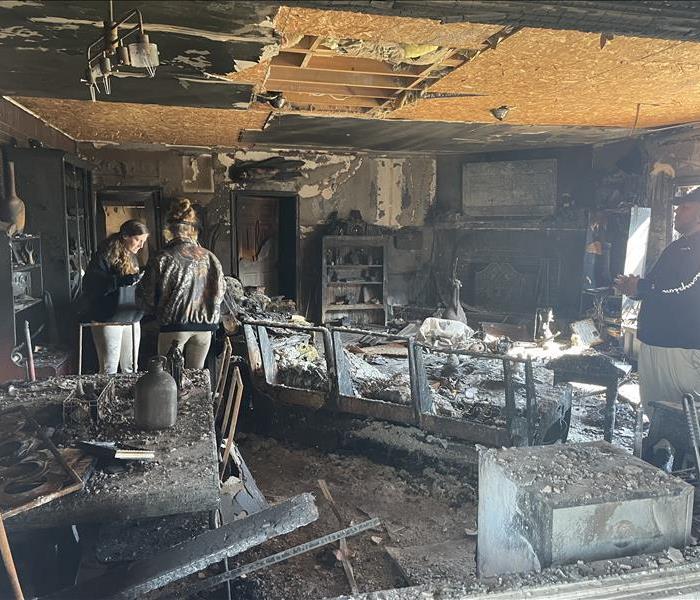How to Remove Soot and Smoke Residue from Surfaces
12/18/2023 (Permalink)
 If you are unsure or dealing with extensive fire damage, it is recommended to consult with professional fire damage restoration experts.
If you are unsure or dealing with extensive fire damage, it is recommended to consult with professional fire damage restoration experts.
After a fire, one of the most challenging tasks of fire damage restoration is removing soot and smoke residue from surfaces. Soot and smoke particles can cling to various materials and surfaces, causing discoloration, odors, and secondary risks, if not properly addressed. In this blog, we will explore effective techniques for removing soot and smoke residue from surfaces, ensuring a thorough and successful fire damage restoration process.
Safety First
Before beginning any cleaning process, it is essential to prioritize safety. Wear protective gear such as gloves, goggles, and a respirator to protect yourself from potential health hazards. Open windows or use fans to provide adequate ventilation during the cleaning process.
Dry Cleaning
Dry cleaning methods are suitable for light or loose soot and can be used on surfaces that are delicate or prone to water damage. Start by vacuuming any loose soot particles with a vacuum cleaner equipped with a HEPA filter. Use a dry sponge or dry cleaning sponge to gently wipe away the remaining soot residue. Be careful not to apply excessive pressure, as it can push the soot deeper into the surface.
Wet Cleaning
Wet cleaning is appropriate for surfaces that can withstand moisture. Begin by testing a small, inconspicuous area to ensure that the cleaning solution does not cause discoloration or damage to the surface. Prepare a cleaning solution by mixing warm water with a mild detergent. Dip a sponge or cloth into the solution, wring out excess moisture, and gently wipe the soot-covered surface. Rinse the sponge or cloth frequently and change the cleaning solution as needed. Finally, use a clean, damp cloth to remove any remaining residue and allow the surface to dry thoroughly.
Professional Cleaning Products
There are various cleaning products available specifically designed for removing soot and smoke residue. Look for products that are suitable for the specific surface you are cleaning, such as upholstery, walls, or countertops. Follow the manufacturer's instructions carefully, and make sure to test the product in an inconspicuous area before applying it to larger surfaces.
Homemade Cleaning Solutions
If you prefer to use natural or homemade cleaning solutions, consider using vinegar or baking soda. Vinegar is acidic and can help break down soot and smoke residue. Mix equal parts of vinegar and water, apply the solution to the affected surface, and gently scrub with a soft cloth or sponge. Baking soda is an excellent deodorizer and can be used to neutralize odors. Create a paste by mixing baking soda with water, apply it to the soot-covered surface, and scrub gently.
Don't Forget Ventilation Systems
Soot and smoke residue can also accumulate in ventilation systems, contributing to lingering odors and potential recontamination. It is crucial to thoroughly clean and inspect air ducts, HVAC systems, and filters. Consider hiring professional duct cleaning services to ensure a comprehensive cleaning and restoration of these systems.
In conclusion, the removal of soot and smoke residue from surfaces requires careful consideration and effective techniques. Whether using dry or wet cleaning methods, professional cleaning products, or homemade solutions, it is essential to prioritize safety and test small areas before tackling larger surfaces. Remember to pay attention to ventilation systems to prevent recontamination and promote clean, fresh indoor air. If you are unsure or dealing with extensive fire damage, it is recommended to consult with professional fire damage restoration services who have the expertise and tools to effectively remove soot and smoke residue from surfaces, ensuring a thorough and successful restoration process.



 24/7 Emergency Service
24/7 Emergency Service